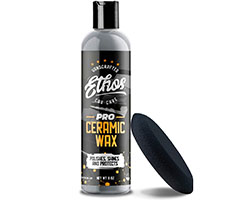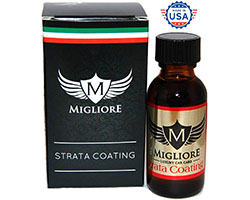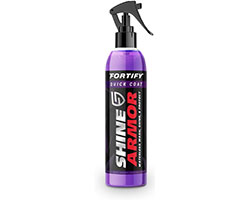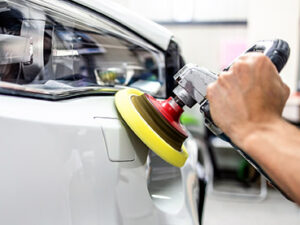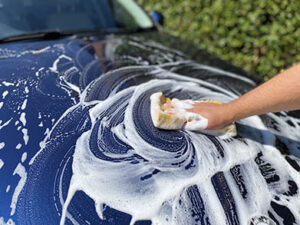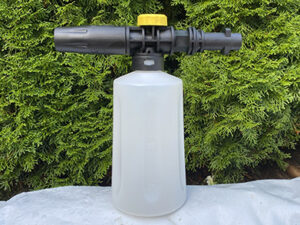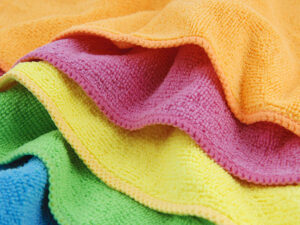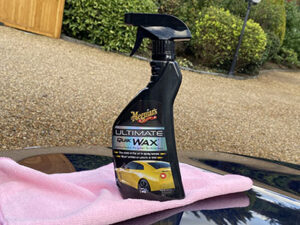Home \ Shop \ Car Care & Detailing \ Ceramic Coatings For Car
8 Best Ceramic Coatings For Car in 2025 (Review and Buyer’s guide)
How to keep your car look great longer and increase the resale price? Guarding the paintwork with the best ceramic coating get even more benefits
- 1. The Best Ceramic Coatings Review
- 2. ETHOS PRO Ceramic Coating
- 3. MIGLIORE Strata Coating Ceramic PRO
- 4. SHINE ARMOR Fortify Ceramic Coating Spray
- 5. 9H MRFiX Auto Ceramics Coating Kit
- 6. CARPRO C.Quartz Ceramic Coating Kit 50ml
- 7. MOTHERS CMX Ceramic Spray Coating (01024)
- 8. COLOR 'N DRIVE Deep Gloss Ceramic Coating Kit
- 9. NANO BOND Ceramic Coating PRO Premium Car Care Kit
- 10. Why Use a Ceramic Car Coating?
- 11. What to Look For When Shopping The Best Car Coating
- 12. Key Features Of The Best Ceramic Coating For Car
- 13. How To Prepare And Apply a Ceramic Coating
- 14. How long does a ceramic coating last on a car?
- 15. How do I maintain the ceramic coating on my car?
- 16. Do I need to wax my car after installing a ceramic coating?
- 17. Does the ceramic coating prevent rust?
- 18. What is the best method to remove a ceramic coating?
Car prices are rising rapidly: In America, the average price of a new car stood at $36,718 in May 2019 – up from $35,742 in 2018. Subsequently, consumers are hanging on to their vehicles longer. And with the average age of a car now standing at 11.8 years, owners are desperate to protect the value of their asset and reduce the effects of daily wear and tear on the vehicle’s appearance.
As a result car owners are increasingly turning to paint protection, hoping to keep their vehicles’ exterior in showroom condition.
Although temporary car-care products are widely used, ceramic coatings – also referred to as Nano ceramic-coatings – are gaining in popularity as consumers seek to reduce car maintenance by replacing waxes, polishes and sealers with more durable solutions, such as ceramic coatings.
The Best Ceramic Coatings Review
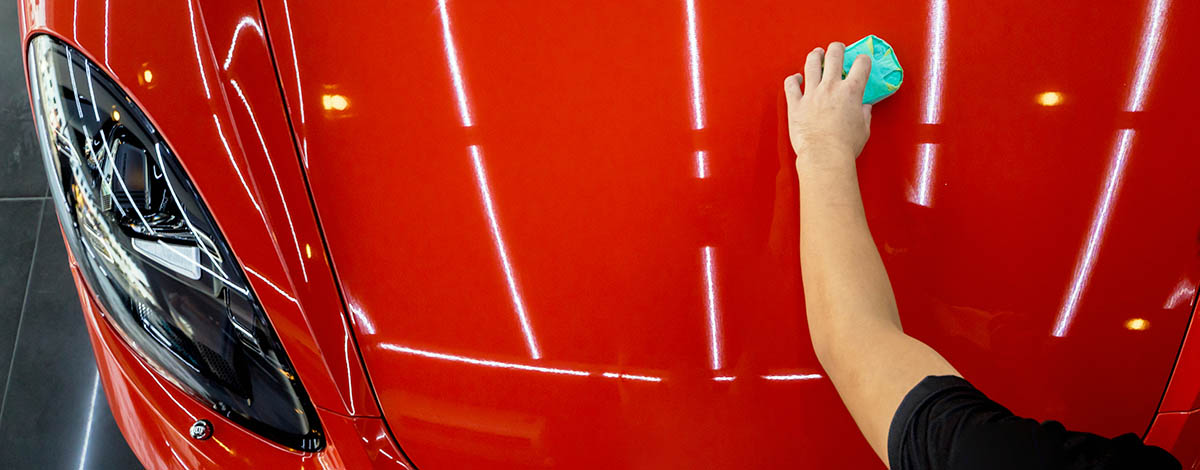

PROS
- Quick and easy to use one product solution
- Long lasting effect month to month
- Unique formula trusted by NASA
- Strong corrosion, oxidation and UV rays protection
CONS
- Not detected
This auto care wax is the best in general in terms of a balance in price and quality. The wax is a three-in-one formula used to protect the outer surfaces of cars. This product comes in at a comfortable price, yet offering enough value for one’s money. The product can be applied to shine and rejuvenate RVs, boats, cars, and many other vehicles. It acts as a quick and effective instant buff formula, which helps to correct scratches and makes vehicles look brand new. The Ethos Car Wax doesn’t just rejuvenate; it also replaces and replenishes worn out polishes and sealants. It is easy to use, so buyers don’t have to employ a professional’s service. The product has exceptional durability, lasting ten times longer than other products, such that one application proves to suffice many times over. The product can be applied on multiple surfaces, like painted surfaces and glass surfaces. The Ethos ceramic wax seals and protects the surfaces of materials to which it has been applied.
This product is a deep action product that not only protects vehicles from oxidative degradation, ultraviolet degradation, and other sources of contaminants; but also has an excellent shine that is guaranteed to leave owner’s cars looking as new as a show car. The quality of this product’s formula is so high that NASA employs the same formula to protect the more delicate parts of the space shuttles from varying weather conditions as it goes into orbit. This shows that the product is more than enough for cars and other vehicles. One unit of the product is about 9.6 ounces, and it should be enough. The application of the product is easy. It comes with an application pad or sponge and requires no water or other tools.
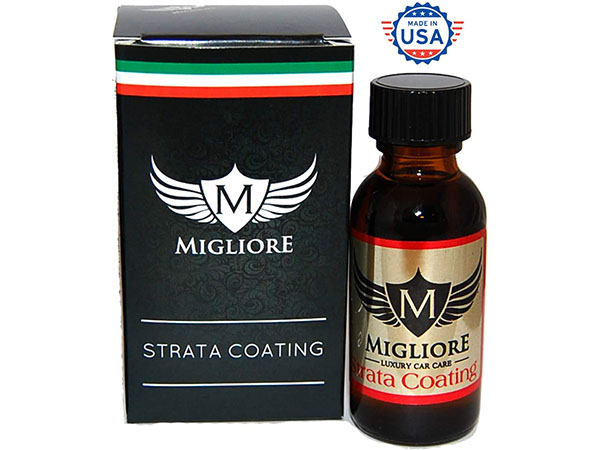
PROS
- Premium (high-end) ceramic coating
- Don't require professional service
- Built to last up to 12 months
- Protects paint against washed-induced marring
CONS
- It is expensive
The Migliore Strata coating is a high-end premium product with premium features to match. It costs about $90, and it provides a high gloss coating and sealant to vehicles. This product is relatively low maintenance. It protects the paint and bodywork of cars, thereby keeping the car looking newer for longer. It protects vehicles from contaminants and weather degradation. It also acts as a buff.
The protective ability of the product lasts for up to twelve months. This protective ability is so strong because of the formula’s ceramic content, such that the formula’s coating that forms after application also protects the car from ultraviolet rays. It is easy to apply so car owners do not need to employ a professional’s service. The product has a self-cleaning effect, saving cost and energy for owners as regards cleaning their cars. The product does this as the coating prevents debris and other contaminants from sticking to the car’s body.
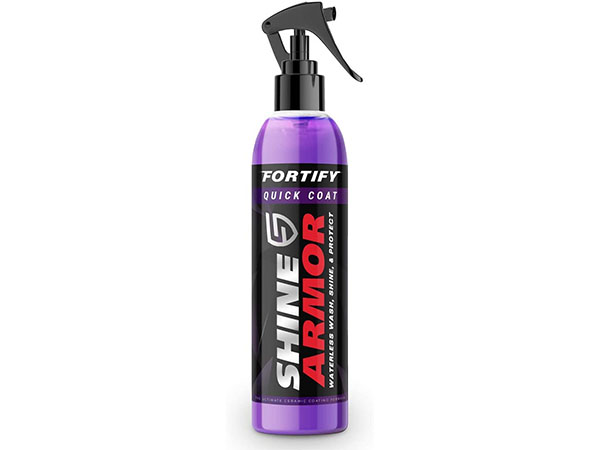
PROS
- Very popular and trusted product
- 3-in-1 advanced formula
- Great for eliminating of dirt, grime & grease
- Cuts the quantity of car washes
CONS
- Only spray included
This ceramic coating product by Shine Armor is an advanced 3-in-1 formula and is an all-in-one ceramic coating. An exciting feature of the Shine Armor product is that it comes in a spray format, making it easier to apply than other products. It is the cheapest of the bunch, costing about $19. Shine Armor coats and shines. So, the consumer gets double benefits. Their cars’ paintwork is protected from debris, weather degradation, and other contaminants, all the while looking aesthetically pleasing, like a show car.
The glisten of the Shine Armor quick ceramic coating is gentle, and because it also acts as a sealant, it affords the consumer the benefit of fewer car washes. The product’s entire content is 6.4 ounces, which is a decent amount for its price.
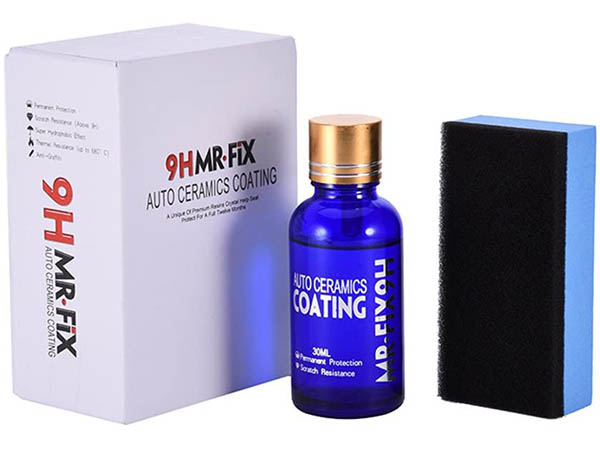
PROS
- Very affordable
- Comes as a kit for proper applying
- High scratch resistance
CONS
- Relatively new product with medium rating
- Small sized application sponge
The product retails at $9-$14 and is among the more affordable ones. Unfortunately, the reputation of the product has been tarnished by many fakes in the market. Some fraudulent vendors are putting out watered down, highly flammable, and substandard versions of the product, some of which even go for a retail price of $1. Buyers commonly patronize these fraudulent vendors because they want to buy a cheaper option. However, the original product is better than these fake ones.
This low-priced ceramic car coating is acclaimed to provide between 3 to 24 months of protection for vehicles. The mechanism of protection is the formation of a layer which consists of crystalline particles that are chemically bonded together. The effect of the product is longer lasting when multiple layers are applied. The product gives a high gloss finish and prevents minor scratches.
The product’s coating provides ultraviolet protection and bearing that a good portion of the vehicular function is out in the sun, this feature comes in quite handy. The product comes with an application sponge.
It shouldn’t be applied in direct sunlight to avoid dust and heat. Users also need to prevent skin contact as much as possible, so it is best to use gloves in the application. Estimations have it that about one to two bottles will be enough to coat a small car, but between two to four bottles will be needed for a larger car.

PROS
- Premium quality product
- Selling as a kit to proper applying
- High-end strong quartz-formula
- Extended guarantee included
CONS
- Pricey (comparing to similar products)
The CarPro Cquartz ceramic coating kit costs about $79 and is quite up there with other expensive market options. It features a better polish result than other ceramic coatings and makes one’s car most outstanding in look. The kit acts to coat objects within a few minutes and helps to reduce degradation due to washing. This product comes with a sponge and is relatively simple to use. Within a few dedicated minutes of application, the coat forms.

PROS
- "Simply Spray Up & Wipe Off" applying
- Solid Nano-quartz technology
- Ultra long-term protection from water
- Trusted product
CONS
- Comes without application sponge
Mothers 01024 CMX Ceramic Spray costs about $16-$22 and comes in a portable, usable quick form. This ceramic coating is a durable product used to coat, protect, and shine a car’s surfaces. Its protective feature is a superhydrophobic protection action. The product is durable in that consumers can get an extended period of use with just one application, so they do not always need to apply it. The mode of application is simple. The content needs to be sprayed on the vehicle and wiped off. However, it is worthy of note that the product can be used alone or in combination with other products such as a booster. When used with a booster, the product will help further strengthen any sealant that consumers have prior applied to the body of the car.
The Formula is compatible with many surfaces and has extra automotive uses. For example, with glass. This ceramic spray can be used to shine glass and further increase the integrity of the glass. At $17, it is highly affordable. So, consumers and users don’t have to break the bank to obtain a unit. It is easy to apply, and consumers can quickly get the hang of it themselves. It is resistant to degradation by weather elements.
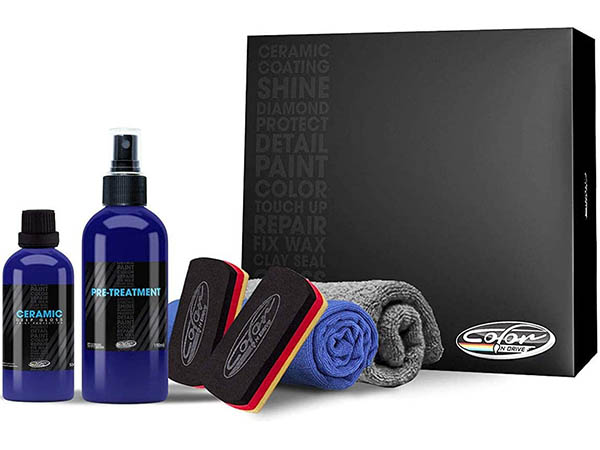
PROS
- Premium (high-end) coating kit
- 2 year warranty by manufacturer
- The kit enough for coating 2 cars
- Made to last up to 100-150 washes
CONS
- Quite pricey
- Applying in several steps
The Color ‘N Drive Deep Gloss Ceramic Kit retails at $60. It helps to achieve a flawless shine for vehicles. This product has three functions; it coats, it seals, and it polishes, making vehicles look like show vehicles. The product achieves a protective role by preventing the car’s paint from weather degradation, ultraviolet degradation, and debris damage. The coating makes it such that debris and foreign material don’t even stick to the body of the car in the first place. This product is durable. The manufacturer claims that the coating can stay for up to five years and withstand about 100 to 150 car washes.
The kit comes with its applicator, and it is relatively easy to use. It is also mistake-friendly, so users can correct themselves when they make mistakes in the application. This kit is so excellent that the product gives much consistency in the application, so users don’t need to coat multiple layers to achieve a decent coating. With the resources provided in the kit, it is estimated that users should be able to coat two cars with two coatings each. There isn’t a shortage of do-it-yourself information online about applying this product, so tech-savvy users shouldn’t have any problems using it.

PROS
- New formula premium coating
- Kit components has a good quality
- Easy to apply product
- Long manufacturer's warranty
CONS
- Not detected
Nano Bond ceramic coating car care kit is a new formula, and it costs about $37. The kit comes with a new microsuede applicator that helps consumers achieve consistency in applying the product to their vehicle. The product acts to coat, seal, and polish car bodies. The coating and sealant functions help to protect the car’s paint from debris, changing climate, and some minor accidents. On the other hand, the polish function is excellent and makes the car look brand new. The effect of the coat is expected to last for two to three years. It is about 30 mm thick, and it has high heat resistance. The bottle size is relatively small, so quite a few bottles will be required to achieve anything tangible on most vehicles.
Why Use a Ceramic Car Coating?
While traditional car waxes typically provide protection for 1 to 4 months, a correctly applied and maintained ceramic coating could be expected to last for about 2 to 5 years with minimum degradation, while offering a number of additional benefits:
- Superior paint protection. The tough, semi-permanent ceramic layer of premium choice products, such as MIGLIORE STRATA COATING’s high gloss SiO2 PRO ceramic coating and car sealant, bond with the paint on a molecular level, offering enhanced protection against environmental degradation such as UV damage, oxidization, rust and “acid rain”, while improving the scratch resistance of the finish.
- Cost-effective paint preservation. The durability of the Nano ceramic-coating does away with the costs associated with the repeated applications required by less robust materials.
- Enhances the reflective properties of the car’s paint. The ceramic coating gives the paint low maintenance, high-gloss finish that adds to the depth and reflectivity of the paint for up to five years.
- Easier cleaning. Coatings, such as SHINE ARMOR’s Fortify Quick Coat Ceramic Coating that offers a well-priced waterless car wash and wax hydrophobic top-coat polish and polymer paint sealant, do a better job than most other protective treatments of fending off everyday surface contaminants such as rain, mud, and road grime.
But not all ceramic coatings for cars are created equal, so it is important to understand how they work and which features to look out for when deciding on the best treatment.
What to Look For When Shopping The Best Car Coating
Unlike many traditional coatings, which are typically formulated using wax or polymer resins, ceramic coatings for cars include silicon dioxide (SiO2) or silica in the composition. This “nanotechnology coating”, when combined with elements such as titanium dioxide, polysilazane, triethanolamine, and water creates a tough shield that, after curing, forms a transparent film commonly referred to as a Nano ceramic coating.
NOTE: Not all ceramic coatings for cars are fully ceramic to make paint protection more ultimate
While the function of the treatment is well understood few people realize there are three categories of ceramic coatings for cars – each with its own unique properties:
- Polymer-based ceramic coatings. This is the most common class of DIY “ceramic” coating used on cars. Despite being promoted as ceramic, these coating’s nanostructures are produced using polymers containing a small concentration of suspended silicon dioxide ceramic particles. These coatings are less scratch resistant with marginal hydrophobicity, and usually, only last up to about two years. However, they are generally keenly priced.
- Ceramic-based coatings. Often referred to as quartz or silicon dioxide ceramic coatings, these start out as “preceramic polymers” that, once the chemical bonding reaction occurs, convert to fully ceramic nanostructures. This makes them ideal for consumers that require greater protection than that offered by polymers:
- Enhanced hydrophobicity. This significantly reduces the sliding angle while increasing contact angle, thus repelling water and other liquids.
- Vastly superior durability. These fully inorganic, ceramic-based nanostructures do not easily degrade.
- Improved scratch resistance. The ceramic nanostructures are extremely hard and far more scratch resistant compared to the relatively soft polymer-based materials.
Despite their obvious advantages, ceramic-based Nanostructures are not suited to all applications; usually due to their hard and often brittle properties which make the coatings susceptible to scratching and cracking in service.
See also: The Best Microfiber Towels and Cloths, Best Orbital Polishers and Buffers
Thus the third class of ceramic coating for cars was created:
- Elastomer-based ceramic coatings. This material is not made from preceramic polymers, but rather from preceramic elastomers. This lends remarkable flexibility to the ceramic nanotubes which significantly improves scratch resistance over conventional ceramic coatings. At the same time, it gives the coating the extraordinary ability to “self-heal” – where the elastic nanotubes are able to resume their original form after an impact that would normally result in a scratch or paint-chip.
The properties of these three types of ceramic coatings for cars pave the way for a wide range of features that allow consumers to match a product to their unique requirements.
Key Features Of The Best Ceramic Coating For Car
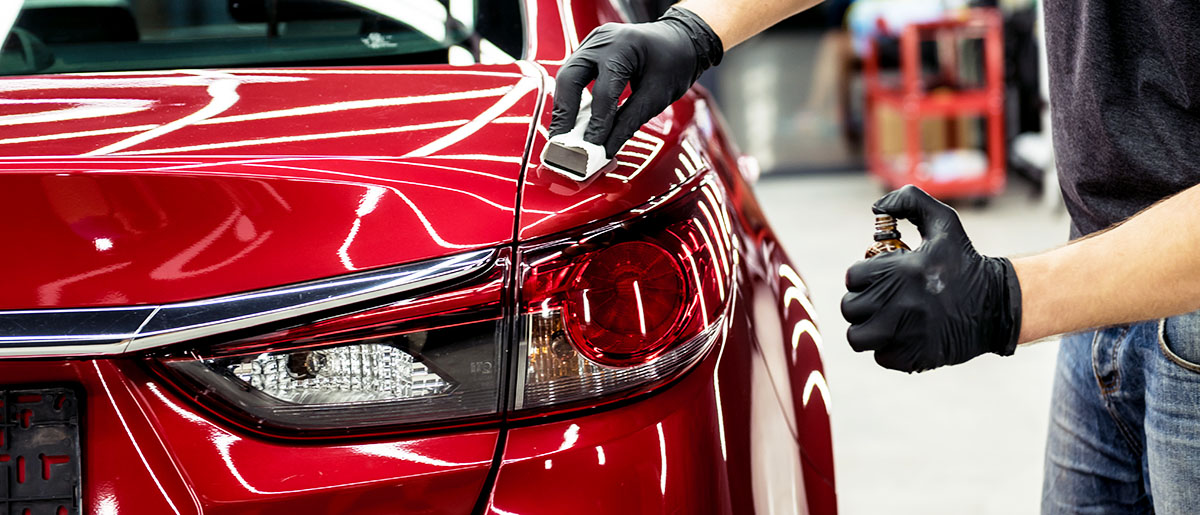
Even though ceramic coatings offer significantly better protection than waxes or sealants and last much longer, there are nevertheless differences in a formulation that impact performance and cost which will ultimately determine the efficacy of the treatment.
Therefore it is important that consumers study the features described by the manufacturer to; firstly, make sure it meets their requirements and, secondly, to allow for objective comparisons of the various products on offer.
So over and above the chemical formulation of the product, described above, other important features buyers should be on the lookout for, are:
- Durability. Depending on the product, ceramic coatings can have very different intervals between treatments – ranging anywhere from two to five years.
- Cost. As with most products, longer service life and higher quality command higher prices, it is therefore important that the consumer weigh up the cost of the product against the performance and benefits.
- Warranty. While a warranty is usually an indication that the manufacturer has confidence in the product, it is important that the prospective buyer examine the terms of the warranty to familiarize themselves with any exclusions – such as the warranty being voided if the ceramic coating is not applied by a professional detailer.
- Level of Hardness. This is an objective rating that describes the product’s resistance to scratching. A ceramic coating of “9H” measured on the “pencil hardness scale” – not the Moh – would denote a good level of scratch resistance. By comparison, the paint finish of a car would normally lie somewhere between 1 and 4H.
- Protection against UV and oxidation. In regions that are subjected to significant UV radiation a vehicle’s paint finish is at risk of premature oxidation and fading – in particular highly reflective colors, such as dark blue, red and black. Thus a ceramic’s ability to combat the effects of these rays would be a feature of interest for anyone staying in such an area.
- Resistance to chemical damage. Acid rain caused by airborne industrial pollution can wreak havoc with a car’s paint. The chemically resistant surface that a ceramic coating provides can prevent contaminants from bonding to the vehicle’s paint, giving the owner time to remove the offending material before damage occurs.
- Reduced maintenance. One of the greatest features of a ceramic coating on a car is that it reduces the amount of maintenance required to keep the paint in showroom condition. The hydrophobic properties mean that water will bead on the surface and readily disperse. At the same time, mud and grime will not bond to the vehicle’s paint as easily, allowing contaminants to be removed effortlessly.
- Ease of application. If the ceramic coating is not going to be applied by a professional detailer it is important that the buyer is capable of successfully administering the treatment, with particular reference to the following:
- Are all materials and tools included in the kit?
- Are there clear and detailed application instructions?
- How easy is it to follow the instructions – are any skills required?
Even though most reputable products – such as ETHOS Handcrafted Car Care Ceramic Wax PRO that is a good all-round ceramic polish and top coat protection that comes with the applicator – will supply the materials and detailed application instructions necessary to carry out the treatment, it is nevertheless helpful for the consumer to have a basic understanding of the process, before undertaking the project.
How To Prepare And Apply a Ceramic Coating
Because the ceramic coating bonds with the car’s existing paint, the process actually takes place in two stages:
- Preparing the existing paintwork
- Applying the ceramic coating
The important task of preparing the paintwork
Since the performance of the ceramic coating relies on a good bond with the existing paintwork it is important that the following steps be followed when preparing the car:
- The vehicle needs to be 100 percent clean and free from contaminants, including ferrous particles. This can be achieved using a clay mitt and a suitable cleaning compound.
- It is equally important to remove all traces of polishing oils and waxes using a product formulated for this purpose.
- Removing swirl-marks through “paint correction” will generate a high gloss finish that will significantly improve the finish and durability of the ceramic coating.
Having completed the all too important surface preparation the ceramic coating is ready to be installed on the vehicle.
How to install a ceramic car-coating
While the exact installation procedure will vary from product to product, most systems will follow a similar format:
- Add the prescribed amount of ceramic coating to microfiber and then apply to the painted surface. To ensure a uniform layer, it is important to only cover a small area at a time. Continue with the application until the entire vehicle has been covered.
- Any irregularities can be corrected by re-applying more coating to the problem area, and then wiping it away immediately.
- It is important to remove any excess, high spots, and residue immediately as this will negatively impact the quality of the finish.
- After successfully applying the ceramic treatment and removing any excess, the coating has to be left to dry and set. Most products recommend that the car does not get wet during the first four hours, and to prevent ‘water spotting,’ any water drops that do find their way onto the vehicle within the first 48 hours must be removed.
For the DIY enthusiast applying a ceramic coating to a car for the first time, it is important to bear the following in mind:
- Concentrate on applying the product evenly – thick layers are not easy to buff away.
- If using a spray-on application, the windows and trim of the vehicle should be masked-off to prevent overspray.
- Any spilt material must be cleaned before it gets dry.
- Clean the nozzle of the applicator after use to prevent a dry coating from blocking the equipment.
- Ensure adequate ventilation, as the fumes can be hazardous.
Given that most consumers are taking a leap of faith in applying ceramic coatings to one of their most highly treasured assets, it is not uncommon for potential buyers to have questions and concerns not addressed by manufacturers of the material.
How long does a ceramic coating last on a car?
With proper care and maintenance, a correctly applied ceramic coating will generally last for two to five years, although some professional ceramic coatings are claimed to last the lifetime of the car.
The lifespan of the application can be significantly influenced by the following factors:
- The quality and type of product, as well as the preparation of the underlying paint.
- How often the vehicle is used.
- Adverse road conditions. Frequent use on gravel or unpaved roads, will reduce the life of the coating.
- Climatic conditions. For instance: High levels of UV could shorten the lifespan of the treatment.
How frequently the car is washed, and whether the correct procedure is followed.
How do I maintain the ceramic coating on my car?
Maintaining a vehicle that has been treated with a ceramic coating is similar to caring for one with a high-gloss paint finish:
- Wash the car regularly. Depending on the environment, every two weeks should suffice.
- Do not wash in direct sunlight. Try to wash the car in the early morning or early evening.
- For washing by hand it’s advisable to use the “Two-Bucket Method” to reduce swirl marks: Using one bucket for soaking the wash mitt, and a second to regularly rinse.
Use a soap or shampoo specifically formulated for car-care that does not contain harsh abrasives or chemicals.
Do I need to wax my car after installing a ceramic coating?
No, there is no need to wax after installing a ceramic coating. In actual fact, while there is no problem with applying a non-abrasive wax to the coating, the natural oils and greases in the wax tend to attract dirt, dust, tree sap, and pollen – which will negatively impact the appearance. Thus with no obvious benefit to waxing, it is preferable to carry out regular maintenance, as described above.
Does the ceramic coating prevent rust?
By virtue of the fact that the ceramic coating protects the car’s exterior with a hard surface, it reduces the risk of stone-chip. This significantly decreases the potential for the vehicle’s bare-steel body panels to be exposed to water and salts that lead to oxidation, better known as rust.
It is important to understand that, although the coating does offer an additional layer of protection against corrosion, it is still possible for stones to breach the ceramic film allowing rust to develop.
What is the best method to remove a ceramic coating?
The same characteristics that give ceramic coatings their superior protection properties also make them difficult to remove. However before re-applying a new treatment the old coat has to be stripped away, which is usually performed in one of three ways:
- Chemical removal. While the bond between the ceramic coating and underlying paintwork is incredibly strong there are alkaline based chemical products designed specifically to remove the layer completely. However these are best applied by professionals as they can also damage the paintwork if incorrectly administered.
- Clay used in combination with other products. Although clay alone will not remove the hard ceramic coating, if used together with other compounds, such as ‘iron dust remover’, older treatments can be removed successfully.
- Polish. Probably the most preferred removal process is that of polishing the damaged or aging ceramic coating. Professionals choose this method as it not only removes the old coating, but also prepares the paintwork for the new ceramic treatment. However, it is important to degrease and properly clean the surface before re-applying the new ceramic coating.
Considering the value of the asset the ceramic coating is protecting, it is well worth the cost of installing and regularly maintaining a top quality product.
We do an efforts to find, research and recommend the best products. So, we may receive commissions from purchases that you make after following the links in our product reviews.


